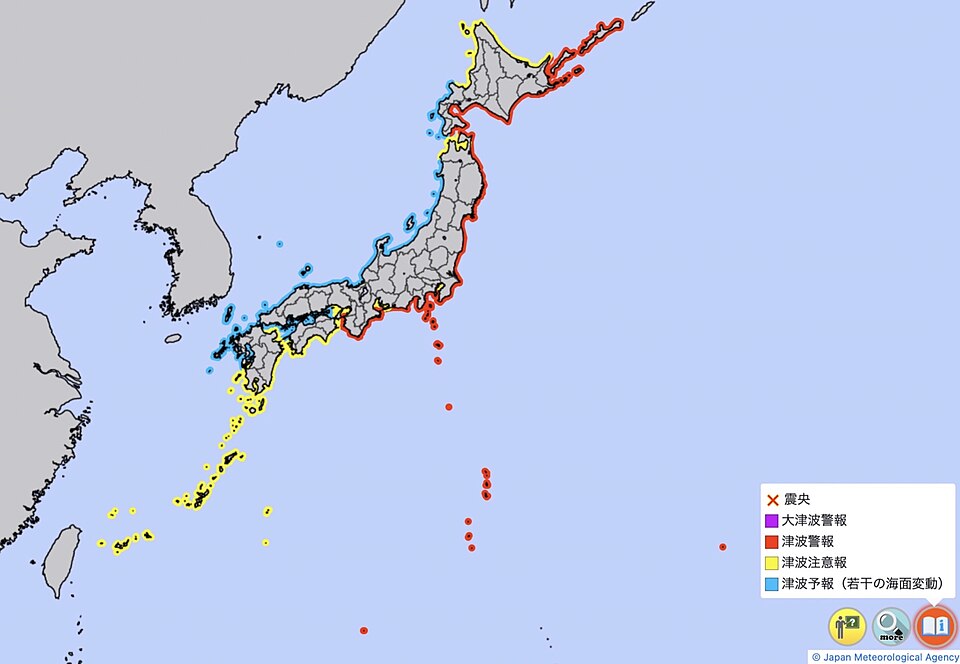8.8 Magnitude Earthquake Strikes Russia's Kamchatka Peninsula, Tsunami Alerts Issued

On July 30, 2025, a powerful earthquake registering 8.8 on the Richter scale struck off the coast of Russia's Kamchatka Peninsula, triggering tsunami warnings across the Pacific region, including Japan, Hawaii, and Alaska. The earthquake, which occurred at 6:45 AM local time (04:45 AM GMT), was centered approximately 125 kilometers east-southeast of Petropavlovsk-Kamchatsky, at a shallow depth of 19.3 kilometers (12 miles), according to the U.S. Geological Survey (USGS). This seismic event has caused significant disruptions in the region, resulting in injuries and damage to infrastructure.
The Kamchatka Peninsula, known for its volcanic activity, was shaken by the quake, leading to reports of injuries as residents fled to safety. Oleg Melnikov, the regional health minister, reported that several individuals required medical attention due to injuries sustained during the quake, including a woman who was injured while attempting to exit the new airport terminal. "Unfortunately, there are some people injured during the seismic event. Some were hurt while running outside, and one patient jumped out of a window," Melnikov stated, as reported by the Russian news agency Tass.
In the aftermath of the earthquake, a tsunami wave measuring up to four meters (approximately 13 feet) was recorded. The first tsunami waves struck Severo-Kurilsk, a settlement on the Kuril Islands. Valery Limarenko, the local governor, assured residents that they were safe and urged them to remain on high ground until the tsunami threat had passed. The tsunami warnings prompted swift evacuations along the Pacific coast of Russia, Japan, and parts of Alaska. The Honolulu Department of Emergency Management in Hawaii advised coastal residents to evacuate, stating, "Take Action! Destructive tsunami waves expected."
Japan’s Meteorological Agency also issued warnings, anticipating waves as high as three meters along its Pacific coastline. Evacuations were ordered in several coastal areas, and citizens were urged to remain vigilant. The National Tsunami Warning Center in Alaska extended warnings to parts of the Aleutian Islands and issued a tsunami watch for the U.S. West Coast, covering California, Oregon, and Washington.
The USGS, which initially estimated the earthquake's magnitude at 8.0, later revised it to 8.7 before confirming the 8.8 magnitude. In response to the earthquake, New Zealand's Civil Defence issued a national advisory alert, warning residents of potential strong currents and unpredictable surges along its coastlines, although no immediate evacuations were required.
This earthquake is among the strongest recorded in the region in recent decades, with Kamchatka Governor Vladimir Solodov noting its seriousness. The geophysical service in the region has indicated that aftershocks are expected to continue, with magnitudes potentially reaching up to 7.5 over the coming month.
The implications of this seismic event extend beyond immediate physical damage. Economically, the affected regions face challenges in recovery, especially in tourism and local infrastructure. Moreover, the international response to tsunami warnings highlights the interconnectedness of Pacific nations in disaster preparedness and response. Future projections indicate that seismic activity in the region may increase as tectonic plates continue to shift.
In conclusion, the recent earthquake off Kamchatka Peninsula serves as a reminder of the region's seismic volatility and the importance of preparedness for natural disasters. As recovery efforts commence, officials will need to assess the damage and implement strategies to mitigate the effects of future earthquakes and tsunamis.
Advertisement
Tags
Advertisement




